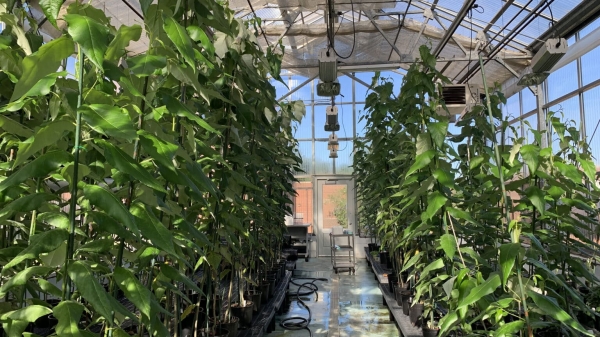Researchers at North Carolina State University used a CRISPR gene-editing system to breed poplar trees with reduced levels of lignin, the major barrier to sustainable production of wood fibers, while improving their wood properties. The findings – published in the journal Science – hold promise to make fiber production for everything from paper to diapers greener, cheaper and more efficient.
Led by NC State CRISPR pioneer Rodolphe Barrangou and tree geneticist Jack Wang, a team of researchers used predictive modeling to set goals of lowering lignin levels, increasing the carbohydrate to lignin (C/L) ratio, and increasing the ratio of two important lignin building blocks – syringyl to guaiacyl (S/G) – in poplar trees. These combined chemical characteristics represent a fiber production sweet spot, Barrangou and Wang say.
“We’re using CRISPR to build a more sustainable forest,” said Barrangou, the Todd R. Klaenhammer Distinguished Professor of Food, Bioprocessing and Nutrition Sciences at NC State and co-corresponding author of the paper. “CRISPR systems provide the flexibility to edit more than just single genes or gene families, allowing for greater improvement to wood properties.”
The machine-learning model predicted and then sorted through almost 70,000 different gene-editing strategies targeting 21 important genes associated with lignin production – some changing multiple genes at a time – to arrive at 347 strategies; more than 99% of those strategies targeted at least three genes.
Read more at North Carolina State University
Photo: CRISPR-modified poplar trees (l) and wild poplar trees grow in an NC State greenhouse. Photo courtesy of Chenmin Yang, NC State University.


